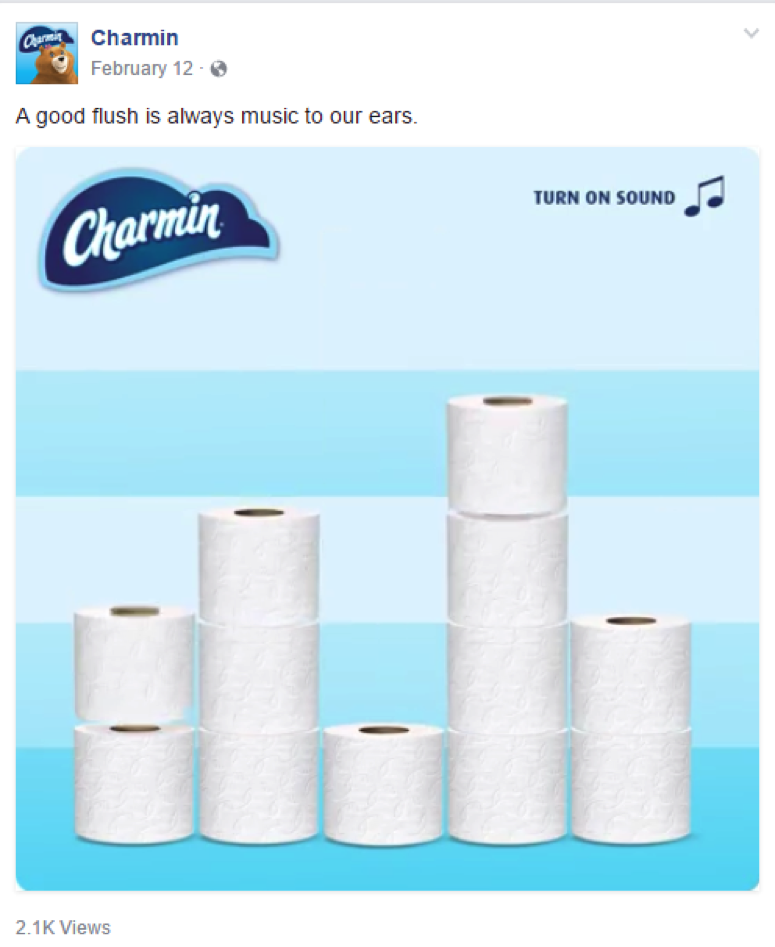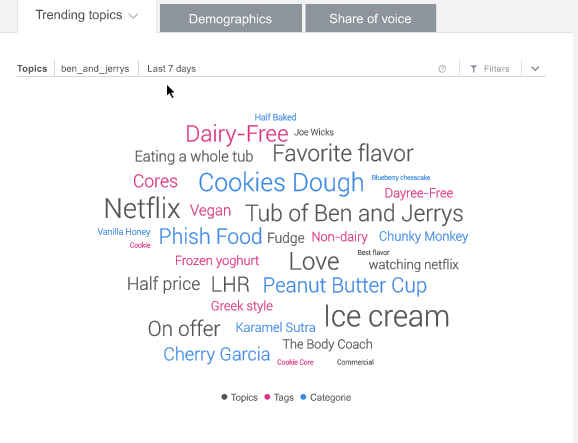One of the greatest aspects of content marketing is that it gives you the opportunity to really let your brand persona shine through. It allows you to incorporate a sense of humanization to set yourself apart.
So what exactly is the tone in relation to content marketing?
The tone you choose to represent your brand encompasses nearly every dimension of your messaging. It deals with your choice of words, phrasing, rhythm, and pace. Basically, the classic saying “It’s not what you say, it’s how you say it,” applies directly to this concept.
In terms of marketing, most of the time, your tone will be showcased through written language on various platforms like social media, emails, blogs, and most importantly, your website.
It’s no secret that consumers today are exposed to more brand messaging than ever. With this in mind, businesses need to pull out all the stops to break through the clutter and get noticed. Crafting a unique tone serves a number of purposes.
1. Trust Building– With so many brands competing for the average person’s attention, consumers have grown numb to blatant sales tactics. For this reason, one of the primary objectives of content marketing is to create a sense familiarity. Studies have shown there is a strong correlation between familiarity and brand trust. The way you continually present your material plays a vital role in bridging the gap between these two attributes.
2. Relatability – Exhibiting a specific tone outside of “BUY THIS! BUY THAT!” shows there is an actual human behind the business and no robot. This helps illustrate more than just what a company does, it shows who make it a brand.
3. Differentiates – The harsh reality of running a business is there are likely hundreds – if not thousands – of others trying to do the same thing. This is why tone plays such a crucial role in marketing. It reinforces why people should buy from you and not the next company. Take Charmin for example.

While toilet paper by itself isn’t a particularly interesting product, their messaging presents a fun, light-hearted tone that gives customers a reason to consider their product above the competition.
As a startup, building a particular tone is a task that should not be taken lightly. Keep in mind, it needs to run parallel with how your business develops.
Let’s discuss the essential practices involved in the process.
Craft Archetypes
In order to leave a meaningful impression on your target audience, you need to know as much about them as possible. This is perhaps the most important ingredient in nailing down a relatable tone.
This goes beyond basic demographics. To truly speak to an audience, you need to (in a sense) become one of them. Now, it’s possible that defining your company’s audience is not exclusive to a single group of people. For example, let’s say your startup has designed an antivirus software. This product could apply to big enterprises all the way down to a single user. When this is the case, put together a list of potential clientele.
From here, answer these common questions about each:
- What do they look like?
- What is the most important thing to them?
- What is something they would never do?
- Where do they fall in terms of socioeconomics?
- What industry do they cater to?
- What do they do in their free time?
- What do they stand to gain from choosing your business?
To sell them on your content, you have to think like them.
Once you have spent a good deal of time coming up with meaningful answers, consider these questions about yourself:
- How do I want my brand to make people feel?
- In what ways do I want people to communicate with my business?
- What are some brand tones that really speak to me?
- What are some brand tones I dislike?
- How do I want to feel when interacting with clients?
Ultimately, you want to come off as, as genuine and natural as possible. Chances are, your brand’s tone will be a strong reflection of your own personality. When answering all these questions, try to identify the common threads. Is there a sense of humor involved on both sides? Are you aiming to be authoritative and informative? How does this reflect your product or service?
Nike does a fantastic job in conveying their tone. They have built their entire content strategy around their audiences, in a way that is appealing to both athletes on the field, and civilians in their everyday lives.
With their motivating tone, they engage with people of all backgrounds by encouraging them to always put forth their best effort.
It never hurts to look at other brands for inspiration.
Listen to your target audience
Formulating a quality tone for your content is far from an overnight’s task. There is only so much you can do on your own. A good portion of the job entails going to the front lines and learning as much as you can about the target audience(s).
Luckily, the finer details are MUCH easier to find now than they used to be. Back in the old days, conducting this type of research required a more hands-on approach. A lot of times, it involved business owners to actually going out and talking with potential customers to get a feel of the types of people they would be dealing with.
Nowadays, you can get more substantial information about a target market without leaving your desk. With over one-third of the world’s population (and growing) using social media, monitoring the major networks is by far the best place to start.

There are all kinds of social monitoring tools that allow you to keep tabs on what people are talking about your brand, competitors, or industry. Brandwatch is one of my personal favorites. This resource goes beyond social media as it collects data on certain keywords or brand names across more than 80 million sources including blogs, review sites, news outlets, and much more.

Tracking information across the web, pertaining to your niche, is one of the most effective ways to learn the specifics of what people want out of your content. With this knowledge, you are equipped with educated inspiration to create relevant messaging.

More importantly, these tools help you glean valuable insights to form archetypes. As many marketers will tell you, creating compelling content depends heavily on your ability to critically listen to the hot button issues within the field.
Monitor content traction
While analytics are a requirement in digital marketing at every stage of the game, they are especially important when developing a tone in the early phases of a startup.
The truth of the matter is that finding the perfect tone will more likely require some trial and error. This is why you need to pay extremely close attention to how your material is performing with the intended audience.
One of the biggest mistakes I see in content marketing is when brands write for themselves and not for the target audience. Regardless of how great you think your material sounds, the people on the other side of the fence might have a different opinion based on their perspective. This is why it’s so important to be open to change.
Using Google Analytics, you can track all of your content to see exactly how your tone is resonating.
Look for the patterns like which topics garner the most engagement or where the bulk of your traffic is coming from. Without conducting these types of measurement, it will be much harder to learn where your strong points are, and the areas to improve upon.
Do some experimenting. This is the point in time where you will have the most freedom to try different approaches to see what works best.
Stay consistent
Once you’ve put in the time to create a tone that truly speaks to the desired audience, it’s important you stay consistent across the distribution channels you are using. However, this doesn’t mean you should completely close your mind to evolving your content’s voice. But, once you have a solid rhythm, try not to make any drastic changes or veer off track.
“If it’s not broken, don’t fix it.”
At this point in time, ideally, you are past sinking 100% of your efforts into simply getting people to check out your store. You have a decent sized mailing list built up and you’ve turned your unique tone into your sales pitch. Now, consistency is what makes you dependable.
If you meet someone wearing a business suit one day, and then a ripped-up t-shirt and ratty sandals the next, it would be difficult to pinpoint exactly what type of person they are. The same concept applies to your content’s tone.
Parting Words
Coming full circle, the tone you use in your messaging should always work to build trust, relatability, and differentiation.
An analogy I always think of is a barber. Sure, there’s practically an endless amount of places to get your hair cut. But, you’ve been going to the same specialist for years.
Why?
Because the barber knows you and you know them. They relate to you. They know your name, they know exactly what you want, you enjoy conversing with them for the 30 or so minutes it takes to cut your hair. The overall experience is a pleasure.
The fundamental of building your brand’s voice is no different. At the end of the day, customers want to get to know you before they contribute to the lifetime value. Use these tactics to develop a personalized tone and people will come back.
7,815 total views, 4 views today

